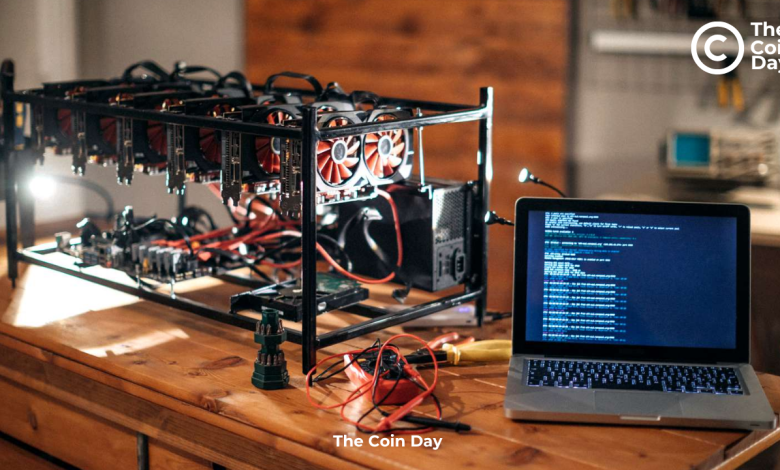Do Mining Rigs Require RAM or CPU to Mine?

Table of Contents
- Introduction
- Understanding the Basics of Crypto Mining
- Do Mining Rigs Use RAM or CPU?
- 3.1 The Role of RAM in Mining
- 3.2 The Role of CPUs in Mining
- GPU Mining vs. CPU Mining: What’s the Difference?
- How to Build a Crypto Mining Rig
- 5.1 Key Components for a Mining Rig
- 5.2 How Much Does It Cost to Build a Mining Rig?
- 5.3 Tips for Building a Cheap Mining Rig
- Optimizing Performance: Balancing RAM, CPU, and GPUs
- Common Misconceptions About Mining Rigs
- FAQs About Crypto Mining Rigs
- Conclusion
1. Introduction
If you’ve ever considered diving into the world of cryptocurrency mining, you’ve likely wondered: Do mining rigs use RAM or CPU? The answer isn’t as straightforward as you might think. Mining is a complex process that involves solving mathematical problems, and the components of your rig—whether it’s RAM, CPU, or GPU—play different roles in this process. In this guide, we’ll break down the function of each component, show you how to build a crypto mining rig, and explore ways to optimize its performance.
2. Understanding the Basics of Crypto Mining
Cryptocurrency mining involves validating transactions and adding them to a blockchain ledger. Miners are rewarded with newly minted coins for their efforts.
Key Concepts in Mining:
- Hashing Power: The computational power needed to solve cryptographic problems.
- Proof-of-Work (PoW): The consensus mechanism used by many cryptocurrencies, like Bitcoin, which relies heavily on mining.
- Mining Rig: A custom-built computer designed to perform mining tasks efficiently.
Different cryptocurrencies have different hardware requirements, so understanding the role of each component is essential.
3. Do Mining Rigs Use RAM or CPU?
Mining rigs can use both RAM and CPUs, but their importance varies depending on the cryptocurrency and mining method.
3.1 The Role of RAM in Mining
RAM (Random Access Memory) is crucial for temporarily storing data during mining operations. However, mining doesn’t demand high amounts of RAM.
Key Points:
- Standard Requirement: Most mining rigs require only 4GB-8GB of RAM.
- Exceptions: Certain cryptocurrencies, like Ethereum, benefit from higher RAM due to their DAG file size.
3.2 The Role of CPUs in Mining
The CPU (Central Processing Unit) acts as the brain of your mining rig, executing commands and managing the rig’s components.
Key Points:
- CPU Mining: Suitable for mining coins like Monero that require lower computational power.
- Secondary Role: In GPU mining rigs, the CPU mainly supports GPU operations rather than performing direct mining tasks.
4. GPU Mining vs. CPU Mining: What’s the Difference?
| Feature | GPU Mining | CPU Mining |
| Speed | Faster due to parallel processing | Slower, limited by fewer cores |
| Energy Efficiency | More efficient for PoW tasks | Less efficient for mining |
| Cost | Higher initial investment | Lower upfront cost |
| Use Cases | Bitcoin, Ethereum | Monero, niche coins |
GPU mining is the preferred method for most cryptocurrencies due to its higher efficiency and speed.
5. How to Build a Crypto Mining Rig
5.1 Key Components for a Mining Rig
To build an efficient mining rig, you’ll need the following components:
- GPU: The most critical component for most mining rigs.
- CPU: Necessary for basic operations; choose a compatible and reliable model.
- Motherboard: Supports multiple GPUs and connects all components.
- RAM: 4GB-8GB is sufficient for most rigs.
- Power Supply Unit (PSU): Must handle the power demand of your GPUs and other components.
- Storage: A small SSD (120GB or less) is enough to run the operating system and mining software.
5.2 How Much Does It Cost to Build a Mining Rig?
The cost of building a mining rig depends on:
- Type of Cryptocurrency: GPU mining rigs can cost $2,000-$5,000.
- Component Prices: Fluctuations in GPU prices due to demand can significantly affect costs.
5.3 Tips for Building a Cheap Mining Rig
- Buy Used GPUs: Look for second-hand GPUs to save money.
- Minimize RAM and Storage: Don’t overspend on unnecessary specifications.
- Efficient Cooling: Use cost-effective cooling solutions to prevent overheating.
6. Optimizing Performance: Balancing RAM, CPU, and GPUs
For an efficient mining rig:
- Focus on GPUs if you’re mining coins like Ethereum or Bitcoin.
- Use a reliable but cost-effective CPU for managing GPU operations.
- Ensure sufficient RAM (4GB-8GB) to prevent bottlenecks.
- Regularly update your mining software and drivers for optimal performance.
7. Common Misconceptions About Mining Rigs
7.1 More RAM Equals Better Performance
High RAM isn’t a priority for mining rigs unless specified by the cryptocurrency, like Ethereum.
7.2 CPUs Are the Backbone of All Mining Rigs
While true for CPU-mined coins, most mining rigs rely heavily on GPUs for performance.
7.3 Mining Rigs Need High-End Hardware for Every Component
Focus on optimizing GPUs and power supply units, as these have the most significant impact.
8. FAQs About Crypto Mining Rigs
Q: Do mining rigs use RAM or CPU?
A: Mining rigs use both, but the CPU plays a support role in GPU mining rigs, and RAM requirements are minimal (4GB-8GB).
Q: How to build a crypto mining rig?
A: Gather essential components like GPUs, CPU, motherboard, PSU, and RAM. Assemble them, install mining software, and start mining.
Q: How much does it cost to build a mining rig?
A: Costs range from $2,000 to $5,000 for GPU mining rigs, depending on components and cryptocurrency.
Q: Can I build a cheap crypto mining rig?
A: Yes, by buying used GPUs, minimizing RAM and storage costs, and optimizing cooling solutions.
Q: Is GPU mining better than CPU mining?
A: Yes, GPU mining is faster and more efficient, making it the preferred method for most cryptocurrencies.
9. Conclusion
When it comes to do mining rigs use RAM or CPU, the answer depends on the cryptocurrency and mining method. For most modern mining rigs, GPUs take center stage, while CPUs and RAM play supporting roles. Understanding these components is crucial for building an efficient rig, whether you’re looking for high performance or cost-effectiveness.
Whether you’re a beginner learning how to build a crypto mining rig or an experienced miner seeking optimization tips, this guide equips you with the knowledge to make informed decisions and maximize your mining potential.




